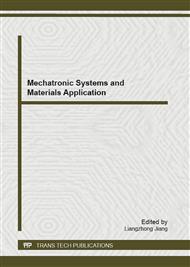p.165
p.173
p.179
p.185
p.189
p.195
p.201
p.206
p.212
An Optimal Rapid Energy-Storing Design for the Stackable Piezoelectric Power Generation Devices
Abstract:
The optimal design for stackable piezoelectric power generation device and its micropower energy storage method is presented in this work. In this configuration, three different arrangement designs of piezoelectric power generation devices were put and compared for obtaining a greater produced output power. Evidence shows that the Sample 2 among the three different arrangement stackable piezoelectric power generation devices could avoid damage to the PZT-5H and achieve a highest instantaneous output power (5.175mW). Moreover, to establish the high efficiency energy storage system, using low power buck converter IC (LTC3588-1) was proposed. The obtained results show that a 15mAh Ni-MH battery could be fully-charged within two hours by utilizing the optimal arrangement design stackable piezoelectric power generation device combining with micropower energy storage system.
Info:
Periodical:
Pages:
189-194
Citation:
Online since:
November 2012
Authors:
Price:
Сopyright:
© 2012 Trans Tech Publications Ltd. All Rights Reserved
Share:
Citation:


